Mathematical Statistics 1st Edition Dieter Rasch
Visit to download the full and correct content document: https://textbookfull.com/product/mathematical-statistics-1st-edition-dieter-rasch/
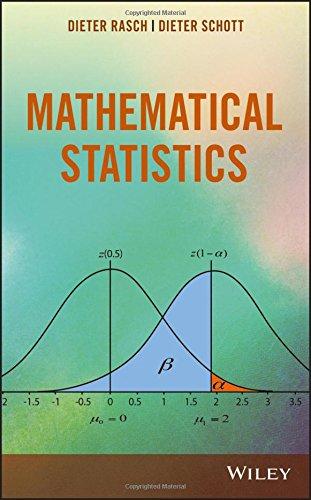
More products digital (pdf, epub, mobi) instant download maybe you interests ...
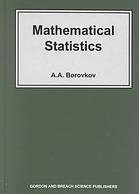
Mathematical Statistics Borovkov A. A.
https://textbookfull.com/product/mathematical-statisticsborovkov-a-a/
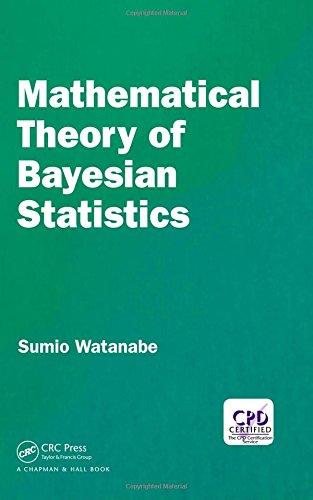
Mathematical Theory of Bayesian Statistics 1st Edition Sumio Watanabe
https://textbookfull.com/product/mathematical-theory-of-bayesianstatistics-1st-edition-sumio-watanabe/
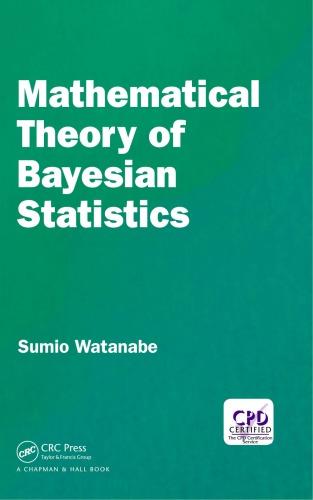
Mathematical Theory of Bayesian Statistics First Edition Watanabe
https://textbookfull.com/product/mathematical-theory-of-bayesianstatistics-first-edition-watanabe/

Modern Mathematical Statistics with Applications Jay L. Devore
https://textbookfull.com/product/modern-mathematical-statisticswith-applications-jay-l-devore/
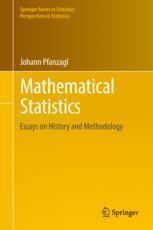
Mathematical Statistics Essays on History and Methodology 1st Edition Johann Pfanzagl (Auth.)
https://textbookfull.com/product/mathematical-statistics-essayson-history-and-methodology-1st-edition-johann-pfanzagl-auth/
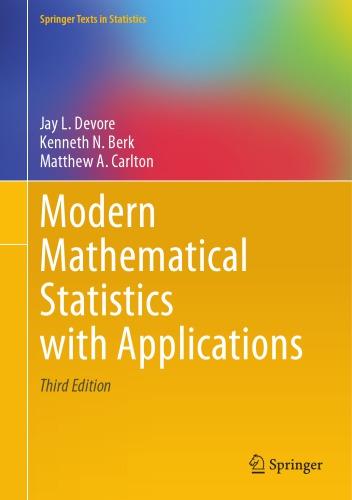
Modern Mathematical Statistics With Applications 3rd Edition Jay L. Devore
https://textbookfull.com/product/modern-mathematical-statisticswith-applications-3rd-edition-jay-l-devore/
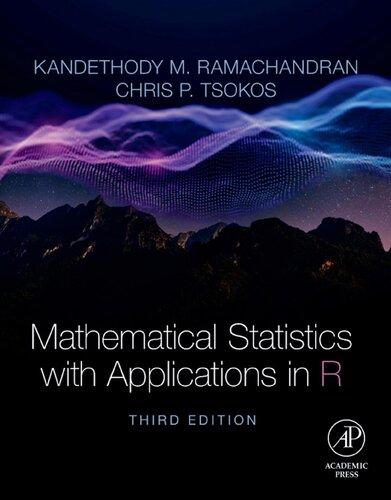
Mathematical Statistics With Applications in R (Third Edition) Kandethody M. Ramachandran
https://textbookfull.com/product/mathematical-statistics-withapplications-in-r-third-edition-kandethody-m-ramachandran/
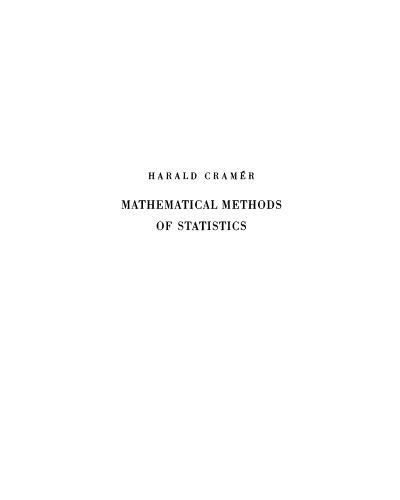
Mathematical Methods of Statistics Pms 9 Volume 9 Harald Cramér
https://textbookfull.com/product/mathematical-methods-ofstatistics-pms-9-volume-9-harald-cramer/
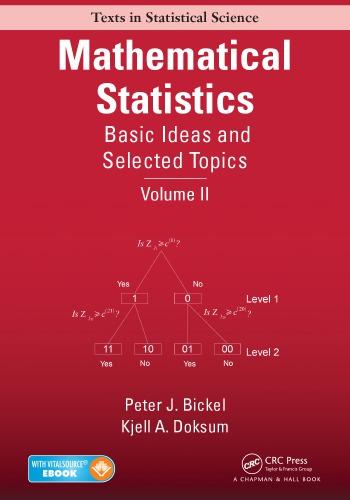
Mathematical statistics basic ideas and selected topics
Volume II Bickel P.J.
https://textbookfull.com/product/mathematical-statistics-basicideas-and-selected-topics-volume-ii-bickel-p-j/
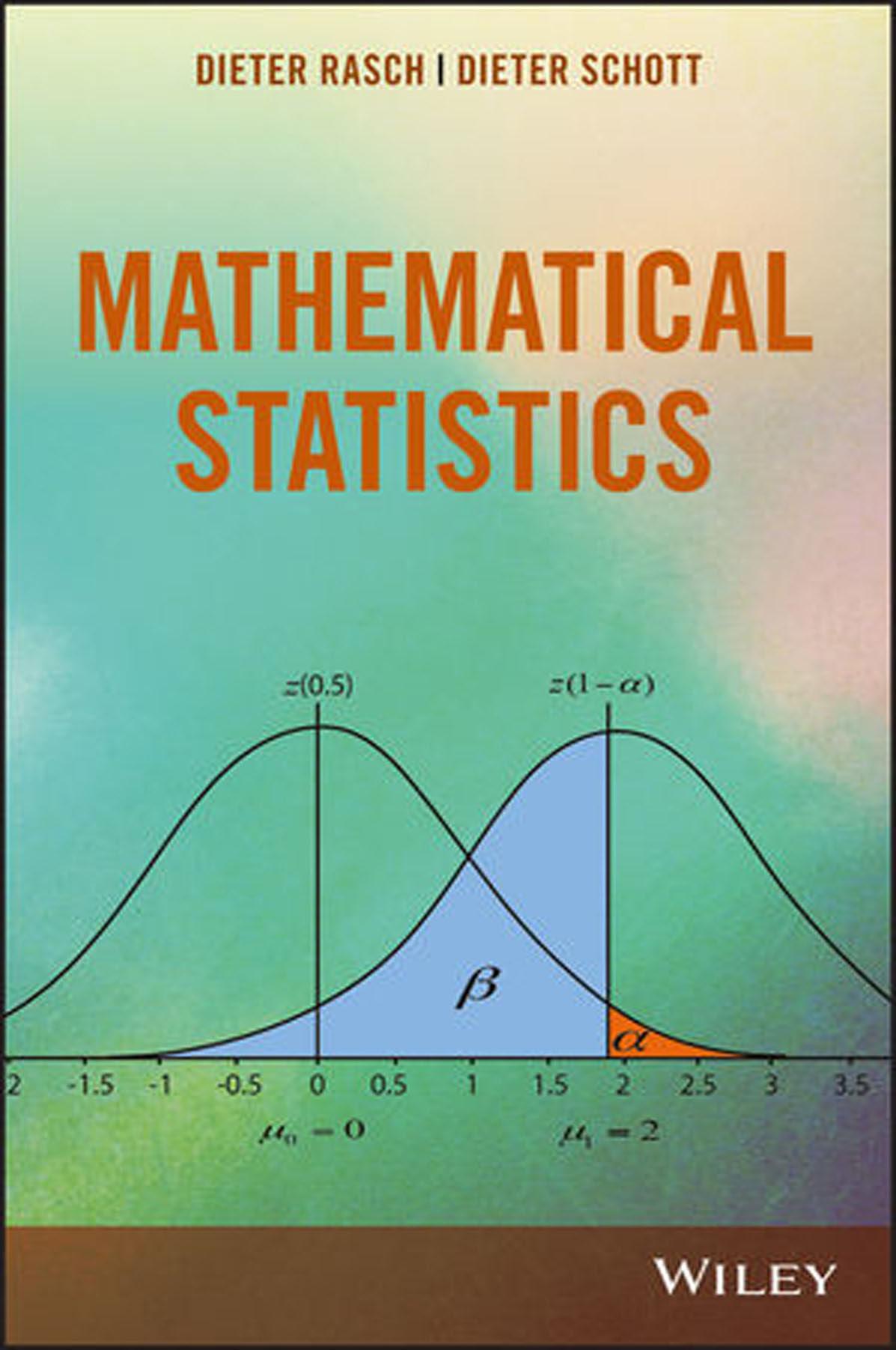
MathematicalStatistics
MathematicalStatistics
DieterRasch
UniversityofNaturalResourcesandLifeSciences, InstituteofAppliedStatisticsandComputing Vienna,Austria
DieterSchott
FacultyofEngineering,HochschuleWismar,UniversityofApplied Sciences:Technology,BusinessandDesign Wismar,Germany
Thiseditionfirstpublished2018
©2018JohnWiley&SonsLtd
Allrightsreserved.Nopartofthispublicationmaybereproduced,storedinaretrievalsystem,or transmitted,inanyformorbyanymeans,electronic,mechanical,photocopying,recordingor otherwise,exceptaspermittedbylaw.Adviceonhowtoobtainpermissiontoreusematerialfrom thistitleisavailableathttp://www.wiley.com/go/permissions.
TherightofDieterRaschandDieterSchotttobeidentifiedastheauthorsofthisworkhasbeen assertedinaccordancewithlaw.
RegisteredOffices
JohnWiley&Sons,Inc.,111RiverStreet,Hoboken,NJ07030,USA
JohnWiley&SonsLtd,TheAtrium,SouthernGate,Chichester,WestSussex,PO198SQ,UK
EditorialOffice
9600GarsingtonRoad,Oxford,OX42DQ,UK
Fordetailsofourglobaleditorialoffices,customerservices,andmoreinformationaboutWiley productsvisitusatwww.wiley.com.
Wileyalsopublishesitsbooksinavarietyofelectronicformatsandbyprint-on-demand.Some contentthatappearsinstandardprintversionsofthisbookmaynotbeavailableinotherformats.
LimitofLiability/DisclaimerofWarranty
Whilethepublisherandauthorshaveusedtheirbesteffortsinpreparingthiswork,theymake norepresentationsorwarrantieswithrespecttotheaccuracyorcompletenessofthecontentsofthis workandspecificallydisclaimallwarranties,includingwithoutlimitationanyimpliedwarranties ofmerchantabilityorfitnessforaparticularpurpose.Nowarrantymaybecreatedorextended bysalesrepresentatives,writtensalesmaterialsorpromotionalstatementsforthiswork.Thefact thatanorganization,website,orproductisreferredtointhisworkasacitationand/orpotential sourceoffurtherinformationdoesnotmeanthatthepublisherandauthorsendorsetheinformation orservicestheorganization,website,orproductmayprovideorrecommendationsitmaymake. Thisworkissoldwiththeunderstandingthatthepublisherisnotengagedinrenderingprofessional services.Theadviceandstrategiescontainedhereinmaynotbesuitableforyoursituation.You shouldconsultwithaspecialistwhereappropriate.Further,readersshouldbeawarethatwebsites listedinthisworkmayhavechangedordisappearedbetweenwhenthisworkwaswrittenandwhenit isread.Neitherthepublishernorauthorsshallbeliableforanylossofprofitoranyothercommercial damages,includingbutnotlimitedtospecial,incidental,consequential,orotherdamages.
LibraryofCongressCataloging-in-PublicationData
Names:Rasch,Dieter,author.|Schott,Dieter,author.
Title:Mathematicalstatistics/byDieterRasch,DieterSchott.
Description:Hoboken,NJ:JohnWiley&Sons,2018.|Includes bibliographicalreferencesandindex.|
Identifiers:LCCN2017039506(print)|LCCN2017046479(ebook)|ISBN 9781119385264(pdf)|ISBN9781119385233(epub)|ISBN9781119385288(cloth)
Subjects:LCSH:Mathematicalstatistics.
Classification:LCCQA276(ebook)|LCCQA276.R3622018(print)|DDC 519.5–dc23
LCrecordavailableathttps://lccn.loc.gov/2017039506
Coverdesign:Wiley
Coverimage:(Background)©XavierAntoinet/EyeEm/GettyImages; (Graph)DensityFunctionsoftheEstimatoroftheLocationParameter μ DependingontheHypothesisValues μ =0and μ =2,respectively. CourtesyofDieterRaschandDieterSchott
Setin10/12ptWarnockbySPiGlobal,Pondicherry,India
Contents
Preface xiii
1BasicIdeasofMathematicalStatistics 1
1.1StatisticalPopulationandSamples 2
1.1.1ConcreteSamplesandStatisticalPopulations 2
1.1.2SamplingProcedures 4
1.2MathematicalModelsforPopulationandSample 8
1.3SufficiencyandCompleteness 9
1.4TheNotionofInformationinStatistics 20
1.5StatisticalDecisionTheory 28
1.6Exercises 32 References 37
2PointEstimation 39
2.1OptimalUnbiasedEstimators 41
2.2Variance-InvariantEstimation 53
2.3MethodsforConstructionandImprovementofEstimators 57
2.3.1MaximumLikelihoodMethod 57
2.3.2LeastSquaresMethod 60
2.3.3MinimumChi-SquaredMethod 61
2.3.4MethodofMoments 62
2.3.5JackknifeEstimators 63
2.3.6EstimatorsBasedonOrderStatistics 64
2.3.6.1OrderandRankStatistics 64
2.3.6.2 L-Estimators 66
2.3.6.3 M-Estimators 67
2.3.6.4R-Estimators 68
2.4PropertiesofEstimators 68
2.4.1SmallSamples 69
Contents
2.4.2AsymptoticProperties 71
2.5Exercises 75 References 78
3StatisticalTestsandConfidenceEstimations 79
3.1BasicIdeasofTestTheory 79
3.2TheNeyman–PearsonLemma 87
3.3TestsforCompositeAlternativeHypothesesandOne-Parametric DistributionFamilies 96
3.3.1DistributionswithMonotoneLikelihoodRatioandUniformlyMost PowerfulTestsforOne-SidedHypotheses 96
3.3.2UMPU-TestsforTwo-SidedAlternativeHypotheses 105
3.4TestsforMulti-ParametricDistributionFamilies 110
3.4.1GeneralTheory 111
3.4.2TheTwo-SampleProblem:PropertiesofVariousTestsand Robustness 124
3.4.2.1ComparisonofTwoExpectations 125
3.4.3ComparisonofTwoVariances 137
3.4.4TableforSampleSizes 138
3.5ConfidenceEstimation 139
3.5.1One-SidedConfidenceIntervalsinOne-ParametricDistribution Families 140
3.5.2Two-SidedConfidenceIntervalsinOne-ParametricandConfidence IntervalsinMulti-ParametricDistributionFamilies 143
3.5.3TableforSampleSizes 146
3.6SequentialTests 147
3.6.1Introduction 147
3.6.2Wald’sSequentialLikelihoodRatioTestforOne-Parametric ExponentialFamilies 149
3.6.3TestaboutMeanValuesforUnknownVariances 153
3.6.4ApproximateTestsfortheTwo-SampleProblem 158
3.6.5SequentialTriangularTests 160
3.6.6ASequentialTriangularTestfortheCorrelationCoefficient 162
3.7RemarksaboutInterpretation 169
3.8Exercises 170 References 176
4LinearModels – GeneralTheory 179
4.1LinearModelswithFixedEffects 179
4.1.1LeastSquaresMethod 180
4.1.2MaximumLikelihoodMethod 184
4.1.3TestsofHypotheses 185
4.1.4ConstructionofConfidenceRegions 190
4.1.5SpecialLinearModels 191
4.1.6TheGeneralisedLeastSquaresMethod(GLSM) 198
4.2LinearModelswithRandomEffects:MixedModels 199
4.2.1BestLinearUnbiasedPrediction(BLUP) 200
4.2.2EstimationofVarianceComponents 202
4.3Exercises 203
References 204
5AnalysisofVariance(ANOVA) – FixedEffectsModels(ModelIof AnalysisofVariance) 207
5.1Introduction 207
5.2AnalysisofVariancewithOneFactor(Simple-orOne-WayAnalysis ofVariance) 215
5.2.1TheModelandtheAnalysis 215
5.2.2PlanningtheSizeofanExperiment 228
5.2.2.1GeneralDescriptionforAllSectionsofThisChapter 228
5.2.2.2TheExperimentalSizefortheOne-WayClassification 231
5.3Two-WayAnalysisofVariance 232
5.3.1Cross-Classification(A × B) 233
5.3.1.1ParameterEstimation 236
5.3.1.2TestingHypotheses 244
5.3.2NestedClassification(A B) 260
5.4Three-WayClassification 272
5.4.1CompleteCross-Classification(A × B × C ) 272
5.4.2NestedClassification(C ≺ B ≺ A) 279
5.4.3MixedClassification 282
5.4.3.1Cross-ClassificationbetweenTwoFactorsWhereOneofThemIs SubordinatedtoaThirdFactor B ≺ A × C 282
5.4.3.2Cross-ClassificationofTwoFactorsinWhichaThirdFactorIs Nested C ≺ A × B 288
5.5Exercises 291 References 291
6AnalysisofVariance:EstimationofVarianceComponents (ModelIIoftheAnalysisofVariance) 293
6.1Introduction:LinearModelswithRandomEffects 293
6.2One-WayClassification 297
6.2.1EstimationofVarianceComponents 300
6.2.1.1AnalysisofVarianceMethod 300
6.2.1.2EstimatorsinCaseofNormallyDistributed Y302
6.2.1.3REMLEstimation 304
6.2.1.4MatrixNormMinimisingQuadraticEstimation 305
6.2.1.5ComparisonofSeveralEstimators 306
6.2.2TestsofHypothesesandConfidenceIntervals 308
6.2.3VariancesandPropertiesoftheEstimatorsoftheVariance Components 310
6.3EstimatorsofVarianceComponentsintheTwo-Wayand Three-WayClassification 315
6.3.1GeneralDescriptionforEqualandUnequalSubclassNumbers 315
6.3.2Two-WayCross-Classification 319
6.3.3Two-WayNestedClassification 324
6.3.4Three-WayCross-ClassificationwithEqual SubclassNumbers 326
6.3.5Three-WayNestedClassification 333
6.3.6Three-WayMixedClassification 335
6.4PlanningExperiments 336
6.5Exercises 338 References 339
7AnalysisofVariance – ModelswithFiniteLevelPopulations andMixedModels 341
7.1Introduction:ModelswithFiniteLevelPopulations 341
7.2RulesfortheDerivationof SS, df, MS and E(MS)inBalanced ANOVAModels 343
7.3VarianceComponentEstimatorsinMixedModels 348
7.3.1AnExamplefortheBalancedCase 349
7.3.2TheUnbalancedCase 351
7.4TestsforFixedEffectsandVarianceComponents 353
7.5VarianceComponentEstimationandTestsofHypothesesin SpecialMixedModels 354
7.5.1Two-WayCross-Classification 355
7.5.2Two-WayNestedClassification B ≺ A358
7.5.2.1Levelsof A Random 360
7.5.2.2Levelsof B Random 361
7.5.3Three-WayCross-Classification 362
7.5.4Three-WayNestedClassification 365
7.5.5Three-WayMixedClassification 368
7.5.5.1TheType(B ≺ A)× C368
7.5.5.2TheType C ≺ AB371
7.6Exercises 374 References 374
8RegressionAnalysis – LinearModelswithNon-randomRegressors (ModelIofRegressionAnalysis)andwithRandomRegressors (ModelIIofRegressionAnalysis) 377
8.1Introduction 377
8.2ParameterEstimation 380
8.2.1LeastSquaresMethod 380
8.2.2OptimalExperimentalDesign 394
8.3TestingHypotheses 397
8.4ConfidenceRegions 406
8.5ModelswithRandomRegressors 410
8.5.1Analysis 410
8.5.2ExperimentalDesigns 415
8.6MixedModels 416
8.7ConcludingRemarksaboutModelsofRegressionAnalysis 417
8.8Exercises 419 References 419
9RegressionAnalysis – IntrinsicallyNon-linearModelI 421
9.1EstimatingbytheLeastSquaresMethod 424
9.1.1Gauss–NewtonMethod 425
9.1.2InternalRegression 431
9.1.3DeterminingInitialValuesforIterationMethods 433
9.2GeometricalProperties 434
9.2.1ExpectationSurfaceandTangentPlane 434
9.2.2CurvatureMeasures 440
9.3AsymptoticPropertiesandtheBiasofLSEstimators 443
9.4ConfidenceEstimationsandTests 447
9.4.1Introduction 447
9.4.2TestsandConfidenceEstimationsBasedontheAsymptotic CovarianceMatrix 451
9.4.3SimulationExperimentstoCheckAsymptoticTestsand ConfidenceEstimations 452
9.5OptimalExperimentalDesign 454
9.6SpecialRegressionFunctions 458
9.6.1ExponentialRegression 458
9.6.1.1PointEstimator 458
9.6.1.2ConfidenceEstimationsandTests 460
9.6.1.3ResultsofSimulationExperiments 463
9.6.1.4ExperimentalDesigns 466
9.6.2TheBertalanffyFunction 468
9.6.3TheLogistic(Three-ParametricHyperbolicTangent)Function 473
9.6.4TheGompertzFunction 476
Contents
9.6.5TheHyperbolicTangentFunctionwithFourParameters 480
9.6.6TheArcTangentFunctionwithFourParameters 484
9.6.7TheRichardsFunction 487
9.6.8SummarisingtheResultsofSections9.6.1–9.6.7 487
9.6.9ProblemsofModelChoice 488
9.7Exercises 489 References 490
10AnalysisofCovariance(ANCOVA) 495
10.1Introduction 495
10.2GeneralModelI–IoftheAnalysisofCovariance 496
10.3SpecialModelsoftheAnalysisofCovariancefortheSimple Classification 503
10.3.1OneCovariablewithConstant γ 504
10.3.2ACovariablewithRegressionCoefficients γ i DependingontheLevels oftheClassificationFactor 506
10.3.3ANumericalExample 507
10.4Exercises 510 References 511
11MultipleDecisionProblems 513
11.1SelectionProcedures 514
11.1.1BasicIdeas 514
11.1.2IndifferenceZoneFormulationforExpectations 516
11.1.2.1SelectionofPopulationswithNormalDistribution 517
11.1.2.2ApproximateSolutionsforNon-normalDistributionsand t =1 529
11.1.3SelectionofaSubsetContainingtheBestPopulationwithGiven Probability 531
11.1.3.1SelectionoftheNormalDistributionwiththeLargest Expectation 534
11.1.3.2SelectionoftheNormalDistributionwithSmallestVariance 534
11.2MultipleComparisons 539
11.2.1ConfidenceIntervalsforAllContrasts:Scheffé’sMethod 542
11.2.2ConfidenceIntervalsforGivenContrasts:Bonferroni’sandDunn’ s Method 548
11.2.3ConfidenceIntervalsforAllContrastsfor ni = n:Tukey’ s Method 550
11.2.4ConfidenceIntervalsforAllContrasts:GeneralisedTukey’ s Method 553
11.2.5ConfidenceIntervalsfortheDifferencesofTreatmentswithaControl: Dunnett’sMethod 554
11.2.6MultipleComparisonsandConfidenceIntervals 556
11.2.7WhichMultipleComparisonShallBeUsed? 559
11.3ANumericalExample 559
11.4Exercises 563 References 563
12ExperimentalDesigns 567
12.1Introduction 568
12.2BlockDesigns 571
12.2.1CompletelyBalancedIncompleteBlockDesigns(BIBD) 574
12.2.2ConstructionMethodsofBIBD 582
12.2.3PartiallyBalancedIncompleteBlockDesigns 596
12.3Row–ColumnDesigns 600
12.4FactorialDesigns 603
12.5ProgramsforConstructionofExperimentalDesigns 604
12.6Exercises 604 References 605
AppendixA:Symbolism 609
AppendixB:Abbreviations 611
AppendixC:ProbabilityandDensityFunctions 613
AppendixD:Tables 615
SolutionsandHintsforExercises 627 Index 659
Preface
‘Mathematicalstatistics’ neverlostitsattractiveness,bothasamathematical disciplineandforitsapplicationsinnearlyallpartsofempiricalresearch. Duringthelastyearsitwasfoundthatnoteverythingthatismathematically optimalisalsopracticallyrecommendableifwearenotsurewhetherthe assumptions(forinstance,normality)arevalid.
Asanexampleweconsiderthetwo-sample t-testthatisanoptimal (uniformlymostpowerfulunbiased)testifallassumptionsarefulfilled.Inapplicationshowever,weareoftennotsurethatbothvariancesareequal.Thenthe approximateWelchtestispreferable.Suchresultshavebeenfoundbyextensive simulationexperimentsthatplayedamuchgreaterrolethelasttime(seethe eightinternationalconferencesaboutthistopicsince1994underhttp://iws. boku.ac.at).
Thereforewewrotein2016anewbookinGerman(RaschandSchott,2016) basedonRasch(1995)incorporatingthedevelopmentsofthelastyears. Wedroppedthefirstpartofthebookfrom1995containingmeasureand probabilitytheorybecausewehaveexcellentbooksaboutthissuchasBillingsley (2012)andKallenberg(2002).
Consideringthepositiveresonancetothisbookinthecommunityofstatistics,wedecidedtopresentanEnglishversionofourbookfrom2016.Wethank AlisonOliverforthereceptionintoWiley’spublishingprogramme.
Weassumefromprobabilitytheoryknowledgeaboutexponentialfamilies aswellascentralandnon-central t-, χ 2 -and F-distributions.Becausethedefinitionofexponentialfamiliesisbasicforsomechapters,itisrepeatedin thisbook.
Mostoftheauthorsofbooksaboutmathematicalstatisticsassumethatdata alreadyexistandmustbeanalysed.Butwethinkthattheoptimaldesignforcollectingdataisatleastasimportantasthestatisticalanalysis.Therefore,inadditiontostatisticalanalysis,weincludedthedesignofexperiments.Theoptimal allocationisdescribedinthechaptersonregressionanalysis.Finallyachapter aboutexperimentaldesignsisadded.
Preface
Forpracticalcalculationsofdata,wepresentanduseinsomepartsofthebook IBMSPSSStatistics24 forthestatisticalanalysis,andwethankDr.Johannes Gladitz(Berlin)forgivingusaccesstoit.Unfortunately,itisnotpossibleto changewithinSPSStoBritishEnglish – therefore,youfindinthescreens andinourcommand ‘Analyze’ .
Thedeterminationofsamplesizescanbefoundtogetherwiththedescription ofthemethodofanalysis,andforthesamplesizedeterminationandother designproblems,weofferthepackageOPDOE(OptimalDesignofExperiments)under .

WeheartilythankProf.Dr.RobVerdooren(Wageningen,Netherlands)for provingthecorrectnessofstatisticsandSandraAlmgren(Kremmling,CO, USA)forimprovingtheEnglishtext.
Rostock,December2017
References
DieterRaschandDieterSchott
Billingsley,P.(2012) ProbabilityandMeasure,JohnWiley&Sons,Inc.,NewYork. Kallenberg,O.(2002) FoundationsofModernProbability,2ndedition,Springer, NewYork.
Rasch,D.(1995) MathematischeStatistik,JohannAmbrosiusBarth,Berlin, Heidelberg.
Rasch,D.andSchott,D.(2016) MathematischeStatistik,WileyVCH,Weinheim.
BasicIdeasofMathematicalStatistics
Elementarystatisticalcomputationshavebeencarriedoutforthousandsof years.Forexample,thearithmeticmeanfromanumberofmeasuresorobservationdatahasbeenknownforaverylongtime.
Firstdescriptivestatisticsarosestartingwiththecollectionofdata,forexample,atthenationalcensusorinregistersofmedicalcards,andfollowedbycompressionofthesedataintheformofstatisticsorgraphicalrepresentations (figures).Mathematicalstatisticsdevelopedonthefundamentofprobability theoryfromtheendof19thcenturyon.Atthebeginningofthe20thcentury, KarlPearsonandSirRonaldAylmerFisherwerenotablepioneersofthisnew discipline.Fisher’sbook(1925)wasamilestoneprovidingexperimenterssuch basicconceptsashiswell-knownmaximumlikelihoodmethodandanalysisof varianceaswellasnotionsofsufficiencyandefficiency.AnimportantinformationmeasureisstillcalledtheFisherinformation(seeSection1.4).
Concerninghistoricaldevelopmentwedonotwanttogointodetail.Werefer interestedreaderstoStigler(1986,1990).Insteadwewilldescribetheactual stateofthetheory.Neverthelessmanystimulicomefromrealapplications. Hence,fromtimetotimewewillincluderealexamples.
Althoughtheprobabilitycalculusisthefundamentofmathematicalstatistics, manypracticalproblemscontainingstatementsaboutrandomvariablescannot besolvedwiththiscalculusalone.Forexample,weoftenlookforstatements aboutparametersofdistributionfunctionsalthoughwedonotpartlyorcompletelyknowthesefunctions.Mathematicalstatisticsisconsideredinmanyintroductorytextbooksasthetheoryofanalysingexperimentsorsamples;thatis,itis assumedthatarandomsample(correspondingtoSection1.1)isgiven.Oftenitis notconsideredhowtogetsucharandomsampleinanoptimalway.Thisistreatedlaterindesignofexperiments.Butinconcreteapplications,theexperiment firsthastobeplanned,andaftertheexperimentisfinished,theanalysishastobe carriedout.Butintheoryitisappropriatetodeterminefirstlytheoptimalevaluation,forexample,thesmallestsamplesizeforavarianceoptimalestimator. Henceweproceedinsuchawayandstartwiththeoptimalevaluation,andafter
thisweworkoutthedesignproblems.Anexceptionismadeforsequentialmethodswhereplanningandevaluationarerealisedtogether.
Mathematicalstatisticsinvolvesmainlythetheoryofpointestimation,statisticalselectiontheory,thetheoryofhypothesistestingandthetheoryofconfidenceestimation.Intheseareastheoremsareproved,showingwhich proceduresarethebestonesunderspecialassumptions.
Wewishtomakeclearthatthetreatmentofmathematicalstatisticsonthe onehandanditsapplicationtoconcretedatamaterialontheotherhandare totallydifferentconcepts.Althoughthesametermsoftenoccur,theyneed notbeconfused.Strictlyspeaking,thenotionsoftheempiricalsphere(hence oftherealworld)arerelatedtocorrespondingmodelsintheory.
Ifassumptionsforderivingbestmethodsarenotfulfilledinpracticalapplications,thequestionariseshowgoodthesebestmethodsstillare.Suchquestions areansweredbyapartofempiricalstatistics – bysimulations.Weoftenfind thattheassumptionofanormaldistributionoccurringinmanytheoremsis farfrombeingagoodmodelformanydatainapplications.Inthelastyearssimulationdevelopedintoitsownbranchinmathematics.Thisshowsaseriesof internationalworkshopsonsimulation.Thefirsttosixthworkshopstookplace inSt.Petersburg(Russia)in1994,1996,1998,2001,2005and2009.Theseventh internationalworkshoponsimulationtookplaceinRimini(Italy)in2013and theeighthoneinVienna(Austria)in2015.
Becausethestrengthofassumptionshasconsequencesmainlyinhypothesis testingandconfidenceestimation,wediscusssuchproblemsfirstinChapter3, whereweintroducetheconceptofrobustnessagainstthestrengthof assumptions.
1.1StatisticalPopulationandSamples
1.1.1ConcreteSamplesandStatisticalPopulations
Intheempiricalsciences,onecharacterorseveralcharacterssimultaneously (charactervector)areobservedincertainobjects(orindividuals)ofapopulation.Themaintaskistoconcludefromthesampleofobservedvaluestothe wholesetofcharactervaluesofallobjectsofthispopulation.Theproblemis thatthereareobjectiveoreconomicalpointsofviewthatdonotadmitthecompletesurveyofallcharactervaluesinthepopulation.Wegivesomeexamples:
• Thecoststoregisterallcharactervalueswereoutofallproportiontothevalue ofthestatement(forinstance,measuringtheheightofallpeopleworldwide olderthan18years).
• Theregistrationofcharactervaluesresultsindestructionoftheobjects (destructivematerialstestingsuchasresistancetotearingofropesor stockings).
• Thesetofobjectsisofhypotheticnature,forexample,becausetheypartlydo notexistatthemomentofinvestigation(asallproductsofamachine).
Wecanneglectthefewpracticalcaseswhereallobjectsofapopulationcanbe observedandnomoreextensivepopulationisdemanded,becauseforthem mathematicalstatisticsisnotneeded.Thereforeweassumethatacertainpart (subset)ischosenfromthepopulationtoobserveacharacter(orcharactervector)fromwhichwewanttodrawconclusionstothewholepopulation.Wecall suchaparta(concrete)sample(oftheobjects).Thesetofcharactervalues measuredfortheseobjectsissaidtobea(concrete)sampleofthecharacter values.Eachobjectofthepopulationistopossesssuchacharactervalue(independentofwhetherweregisterthevalueornot).Thesetofcharactervaluesof allobjectsinthepopulationiscalledthecorrespondingstatisticalpopulation.
Aconcretepopulationaswellasthe(sought-after/relevant)characterand thereforealsothecorrespondingstatisticalpopulationneedtobedetermined uniquely.Populationshavetobecircumscribedinthefirstlineinrelationto spaceandtime.Inprincipleitmustbeclearforanarbitraryrealobjectwhether itbelongstothepopulationornot.Inthefollowingweconsidersomeexamples:
Originalpopulation
A Heiferofacertainbreedinacertain regioninacertainyear
B Inhabitantsofatownatacertainday
Statisticalpopulation
A1
Yearlyyieldofmilkoftheseheifer
A2 Bodymassoftheseheiferafter 180days
A3 Backheightoftheseheifer
B1 Bloodpressureofthese inhabitantsat6.00o’clock
B2 Ageoftheseinhabitants
Itisclearthatapplyingconclusionsfromasampletothewholepopulation canbewrong.Forexample,ifthechildrenofadaynurseryarechosenfrom thepopulation B inthetableabove,thenpossiblythebloodpressure B1 but withoutdoubttheage B2 arenotapplicableto B.Generallywespeakofcharacters,butiftheycanhaveacertaininfluencetotheexperimentalresults,they arealsocalledfactors.The(mostlyonlyafew)charactervaluesaresaidtobe factorlevels,andthecombinationsoffactorlevelsofseveralfactorsfactorlevel combinations.
Thesampleshouldberepresentativewithrespecttoallfactorsthatcaninfluencethecharacterofastatisticalpopulation.Thatmeansthecompositionofthe populationshouldbemirroredinthesampleofobjects.Butthatisimpossible forsmallsamplesandmanyfactorlevelcombinations.Forexample,thereare alreadyabout200factorlevelcombinationsinpopulation B concerningthefactorsageandsex,whichcannotberepresentativelyfoundinasampleof100
inhabitants.Thereforewerecommendavoidingthenotionof ‘representative sample’ becauseitcannotbedefinedinacorrectway.
Samplesshouldnotbeassessedaccordingtotheelementsincludedbutaccordingtothewaytheseelementshavebeenselected.Thiswayofselectingasampleis calledsamplingprocedure.Itcanbeappliedeithertotheobjectsasstatistical unitsortothepopulationofcharactervalues(e.g.inadatabank).Inthelatter casethesampleofcharactervaluesarisesimmediately.Inthefirstcasethecharactermustbefirstregisteredattheselectedobjects.Bothprocedures(butnot necessarilythecreatedsamples)areequivalentifthecharactervalueisregistered foreachregisteredobject.Thisisassumedinthischapter.Itisnotthecaseinsocalledcensoredsampleswherethecharactervaluescouldnotberegisteredinall unitsoftheexperiment.Forexample,ifthedeterminationoflifespansofobjects (aselectroniccomponents)isfinishedatacertaintime,measuredvaluesof objectswithlongerlifespans(astimeofdetermination)aremissing.
Inthefollowingwedonotdifferbetweensamplesofobjectsandsamplesof charactervalues;thedefinitionsholdforboth.
Definition1.1 Asamplingprocedureisaruleofselectingapropersubset, namedsample,fromawell-definedfinitebasicsetofobjects(population,universe).Itissaidtobeatrandomifeachelementofthebasicsethasthesame probability p tocomeintothesample.A(concrete)sampleistheresultofasamplingprocedure.Samplesresultingfromarandomsamplingprocedurearesaid tobe(concrete)randomsamples.
Therearealotofrandomsamplingproceduresinthetheoryofsamples(see,e.g. CochranandBoing,1972;KauermannandKüchenhoff,2011;Quatember,2014) thatcanbeusedinpractice.Basicsetsofobjectsaremostlycalled(statistical) populationsorsynonymouslysometimes(statistical)universesinthefollowing.
1.1.2SamplingProcedures
Concerningrandomsamplingprocedures,wedistinguish(amongothercases)
• Thesimplesampling,whereeachelementofthepopulationhasthesame probabilitytocomeintothesample.
• Thestratifiedsampling,wherearandomsamplingisdonewithinthebeforedefined(disjoint)subclasses(strata)ofthepopulation.Thiskindofsampling isonlyatrandomasawholeifthesamplingprobabilitieswithintheclassesare chosenproportionallytothecardinalitiesoftheclasses.
• Theclustersampling,wherethepopulationisdividedagainintodisjointsubclasses(clusters),butthesamplingofobjectsisdonenotamongtheobjectsof thepopulationitselfbutamongtheclusters.Intheselectedclustersallobjects areregistered.Thiskindofselectionisoftenusedasareasamples.Itisonlyat
randomcorrespondingtoDefinition1.1iftheclusterscontainthesamenumberofobjects.
• Themultistagesampling,whereatleasttwostagesofsamplingaretaken.In thelattercasethepopulationisfirstlydecomposedintodisjointsubsets(primaryunits).Thenarandomsamplingisdoneinallprimaryunitstogetsecondaryunits.Amultistagesamplingisfavourableifthepopulationhasa hierarchicalstructure(e.g.country,province,townsintheprovince).Itis atrandomcorrespondingtoDefinition1.1iftheprimaryunitscontainthe samenumberofsecondaryunits.
• The(constantly)sequentialsampling,wherethesamplesizeisnotfixedatthe beginningofthesamplingprocedure.Atfirstasmallsampleistakenandanalysed.Thenitisdecidedwhethertheobtainedinformationissufficient,for example,torejectortoacceptagivenhypothesis(seeChapter3),orifmore informationisneededbyselectingafurtherunit.
Botharandomsampling(procedure)andanarbitrarysampling(procedure) canresultinthesameconcretesample.Hencewecannotprovebyinspecting thesampleitselfwhetherthesampleisrandomlychosenornot.Wehaveto checkthesamplingprocedureused.
Forthepurerandomsampling,Definition1.1isapplieddirectly:eachobject inthepopulationofsize N isdrawnwiththesameprobability p.Thenumberof objectsinasampleiscalledsamplesize,mostlydenotedby n.
Themostimportantcaseofapurerandomsamplingoccursiftheobjectsdrawn fromapopulationarenotputback.Anexampleisalottery,where n numbersare drawnfrom N givennumbers(inGermanythewell-knownLottouses N =49and n =6).Usinganunconditionedsamplingofsize N,thenumber M = N n ofall possiblesubsetshavethesameprobability p = 1 M tocomeintothesample.
Asmentionedbefore,thesampleitselfisonlyatrandomifarandomsampling methodwasused.Butpersonsbecomeatoncesuspiciousifthesampleis extreme.Ifsomebodygetsthetopprizebuyingonelotof10.000possiblelots, thenthiscaseispossiblealthoughratherunlikely.Itcanhappenatrandom,orin otherwords,itcanbetheresultof(acorrect)randomsampling.Butifthispersongetsthetopprizebuyingonelotatthreeconsecutivelotteriesofthementionedkind,andifitturnsoutadditionallythatthepersonisthebrotherofthe lotseller,thendoubtsarejustifiedthattherewassomethingfishygoingon.We wouldrefusetoacceptsuchunlikelyeventsandwouldsupposethatsomething iswrong.Inourlotterycase,wewouldassumethattheselectionwasnotatrandomandthatcheatswereatwork.Nevertheless,thereisanextremelysmall possibilitythatthiseventisatrandom,namely, p =1/1.000.000.000.000.
Incidentally,thestrategyofstatisticaltestsinChapter3istorefusemodels (facts)underwhichobservedeventspossessaverysmallprobabilityandinstead toacceptmodelswheretheseeventshavealargerprobability.
Apuresamplingalsooccursiftherandomsampleisobtainedbyreplacingthe objectsimmediatelyafterdrawingandobservingthateachobjecthasthesame probabilitytocomeintothesampleusingthisprocedure.Hence,thepopulation alwayshasthesamenumberofobjectsbeforeanewobjectistaken.Thatisonly possibleiftheobservationofobjectsworkswithoutdestroyingorchanging them(exampleswherethatisimpossiblearetensilebreakingtests,medical examinationsofkilledanimals,fellingoftreesandharvestingoffood).Thediscussedmethodiscalledsimplerandomsamplingwithreplacement.
Ifapopulationof N objectsisgivenand n objectsareselected,thenitis n < N forsamplingwithoutreplacement,whileobjectsthatcanmultiplyoccurinthe sampleand n > N ispossibleforsamplingwithreplacement.
Amethodthatcansometimesberealisedmoreeasilyisthesystematicsamplingwithrandomstart.Itisapplicableiftheobjectsofthefinitesamplingset arenumberedfrom1to N andthesequenceisnotrelatedtothecharacterconsidered.Ifthequotient m = N/n isanaturalnumber,anaturalnumber i between 1and m ischosenatrandom,andthesampleiscollectedfromobjectswith numbers i , m + i ,2m + i , … ,(n – 1)m + i.Detailedinformationaboutthiscase andthecasewherethequotient m isnotnaturalcanbefoundinRaschetal. (2008)inMethod(1/31/1210).
Thestratifiedsamplingalreadymentionedisadvantageousifthepopulation ofsize N isdecomposedinacontent-relevantmannerinto s disjointsubpopulationsofsizes N1 , N2 , … , Ns.Ofcourse,thepopulationcansometimesbe dividedintosuchsubpopulationsfollowingthelevelsofasupposedinterfering factor.Thesubpopulationsaredenotedasstrata.Drawingasampleofsize n is torealiseinsuchapopulationanunrestrictedsamplingprocedureholdsthe dangerthatnotallstrataareconsideredingeneraloratleastnotinappropriate way.Thereforeinthiscaseastratifiedrandomsamplingprocedureisfavourable.Thenpartialsamplesofsize ni arecollectedfromthe ithstratum(i =1, 2, … , s)wherepurerandomsamplingproceduresareusedineachstratum. Thisleadstoarandomsamplingprocedureforthewholepopulationifthe numbers ni/n arechosenproportionaltothenumbers Ni/N.
Whileforthestratifiedrandomsamplingobjectsareselectedfromeachsubset,forthemultistagesampling,subsetsorobjectsareselectedatrandomat eachstageasdescribedbelow.Letthepopulationconsistof k disjointsubsets ofsize N0,theprimaryunits,inthetwo-stagecase.Further,itissupposedthat thecharactervaluesinthesingleprimaryunitsdifferonlyatrandom,sothat objectsneednottobeselectedfromallprimaryunits.Ifthewishedsamplesize is n = rn0 with r < k,then,inthefirststep, r ofthe k givenprimaryunitsare selectedusingapurerandomsamplingprocedure.Inthesecondstep n0 objects (secondaryunits)arechosenfromeachprimaryunitagainapplyingapurerandomsampling.Thenumberofpossiblesamplesis k r N0 n0 ,andeach
Table1.1 Possiblesamplesusingdifferentsamplingprocedures.
Sampling Number K ofpossiblesamples
Simplerandomsampling
Systematicsamplingwithrandomstart K =10
k =10
Stratifiedrandomsampling
k =20, Ni =50, i= 1, …,20
Stratifiedrandomsampling
k =10, Ni =100, i= 1, …,10
Stratifiedrandomsampling
k =5, Ni =200, i= 1, …,5
Stratifiedrandomsampling
k =2, N1 =400, N2 =600
k =20, N0 = 50, r= 4
Two-stagesampling
k =20, N0 = 50, r= 5
Two-stagesampling
k =10, N0 = 100, r= 2
Two-stagesampling
k =10, N0 = 100, r= 4 Two-stagesampling
k =5, N0 = 200, r= 2
Two-stagesampling
k =2, N0 = 500, r= 1
objectofthepopulationhasthesameprobability p = r k n0 N0 toreachthesample correspondingtoDefinition1.1.
Example1.1 Apopulationhas N =1000objects.Asampleofsize n =100 shouldbedrawnwithoutreplacementofobjects.Table1.1liststhenumber
ofpossiblesamplesusingthediscussedsamplingmethods.Theprobabilityof selectionforeachobjectis p =0.1.
1.2MathematicalModelsforPopulationandSample
Inmathematicalstatisticsnotionsaredefinedthatareusedasmodels(generalisations)forthecorrespondingempiricalnotions.Thepopulation,whichcorrespondstoafrequencydistributionofthecharactervalues,isrelatedtothe modelofprobabilitydistribution.Theconcretesampleselectedbyarandom procedureismodelledbytherealised(theoretical)randomsampling.These modelconceptsareadequate,ifthesize N ofthepopulationsisverylargecomparedwiththesize n ofthesample.
Definition1.2 An n-dimensionalrandomvariable
Y = y1 , y2 , …, yn T , n ≥ 1 withcomponents yi issaidtobearandomsample,if
• All yi havethesamedistributioncharacterisedbythedistributionfunction F(yi, θ )= F(y, θ )withtheparameter(vector) θ Ω Rp and
• All yi arestochasticallyindependentfromeachother,thatis,itholdsforthe distributionfunction F(Y,θ )of Y thefactorisation
FY , θ = n i =1 Fyi , θ , θ Ω R p
Thevalues Y =(y1, y2, … , yn)T ofarandomsample Y arecalledrealisations. Theset{Y}ofallpossiblerealisationsof Y iscalledsamplespace.
Inthisbooktherandomvariablesareprintedwithboldcharacters,andthe samplespace{Y}belongsalwaystoan n-dimensionalEuclidianspace,thatis, {Y} Rn. Thefunction
LY , θ = fY , θ = ∂ FY , θ ∂ Y ,forcontinuous y pY , θ ,fordiscrete y withtheprobabilityfunction p(Y, θ )andthedensityfunction f(Y, θ )correspondinglyissaidtobeforgiven Y asfunctionof θ thelikelihoodfunction(ofthe distribution).
Randomsamplecanhavetwodifferentmeanings,namely:
• Randomsampleasrandomvariable Y correspondingtoDefinition1.2
• (Concrete)randomsampleassubclassofapopulation,whichwasselectedby arandomsampleprocedure.
Therealizations Y ofarandomsample Y wecallarealizedrandomsample. Therandomsample Y isthemathematicalmodelofthesimplerandomsampleprocedure,whereconcreterandomsampleandrealisedrandomsamplecorrespondtoeachotheralsointhesymbolism.
Wedescribeinthisbookthe ‘classical’ philosophy,where Y isdistributedbythe distributionfunction F(Y, θ )withthefixed(notrandom)parameter θ Ω Rp. BesidesthereisthephilosophyofBayeswherearandom θ issupposed,whichis distributedaprioriwithaparameter φ assumedtobeknown.Intheempirical Bayesianmethod,theaprioridistributionisestimatedfromthedatacollected.
1.3SufficiencyandCompleteness
Arandomvariableinvolvescertaininformationaboutthedistributionandtheir parameters.Mainlyforlarge n (say, n >100),itisusefultocondensetheobjects ofarandomsampleinsuchawaythatfewestpossiblenewrandomvariables containasmuchaspossibleofthisinformation.Thisvaguelyformulatedconceptistostatemorepreciselystepwiseuptothenotionofminimalsufficient statistic.First,werepeatthedefinitionofanexponentialfamily.
Thedistributionofarandomvariable y withparametervector θ = (θ 1,θ 2, …, θ p)T belongstoa k-parametricexponentialfamilyifitslikelihoodfunctioncan bewrittenas
fy, θ = hy e k i =1 ηi θ Ti y B θ , wherethefollowingconditionshold:
• ηi and B arerealfunctionsof θ and B doesnotdependon y.
• Thefunction h(y)isnon-negativeanddoesnotdependon θ .
Theexponentialfamilyisincanonicalformwiththeso-callednaturalparameters ηi,iftheirelementscanbewrittenas
fy, η = hy e k i =1 ηi Ti y A η with η = η1 , …, ηk T
Let(Pθ , θ ϵΩ)beafamilyofdistributionsofrandomvariables y withthedistributionfunction F(y, θ ), θ Ω.Therealisations Y =(y1, … , yn)T oftherandom sample
Y = y1 , y2 ,…, yn T ,
wherethecomponents yi aredistributedas y itselflieinthesamplespace{Y}. AccordingtoDefinition1.2thedistributionfunction F(Y, θ )ofarandomsample Y isjustas F(y, θ )uniquelydetermined.
Definition1.3 Ameasurablemapping M = M(Y)=[M1(Y), … , Mr(Y)]T , r ≤ n of{Y}onaspace{M},whichdoesnotdependon θ Ω,iscalledastatistic.
Definition1.4 Astatistic M issaidtobesufficientrelativetoadistribution family(Pθ , θ ϵΩ)orrelativeto θ Ω,respectively,iftheconditionaldistribution ofarandomsample Y isindependentof θ forgiven M = M(Y)= M(Y).
Example1.2 Letthecomponentsofarandomsample Y satisfyatwo-point distributionwiththevalues1and0.Further,letbe P(yi =1)= p and P(yi =0) =1 p ,0< p <1.Then M = M Y = n i =1 yi issufficientrelative(corresponding)to θ (0,1)= Ω.Toshowthis,wehavetoprovethat P Y = Y n i =1 yi = M isindependentof p.Nowitis
P Y = YM = P Y = Y , M = M P M = M , M =0,1, …, n
Weknowfromprobabilitytheorythat M = M Y = n i =1 yi isbinomiallydistributedwiththeparameters n and p.Henceitfollowsthat
P M = M = n M p M 1 p n M , M =0,1, …, n
Furtherwegetwith yi = 0or yi = 1and A(M)={Y M(Y)= M }theresult
P Y = Y , M Y = M = P y1 = y1 , …, yn = yn IAM Y = n i =1 1 yi p yi 1 p 1 yi IAM Y = p n i =1 yi 1 p n n i =1 yi IAM Y = p M 1 p n M
Consequentlyitis P Y = YM = 1 n M ,andthisisindependentof p.
Thiswayofprovingsufficiencyisratherlaborious,butwecanalsoapplyitfor continuousdistributionsasthenextexamplewillshow.
Example1.3 Letthecomponents yi ofarandomsample Y ofsize n be distributedas N(μ,1)withexpectedvalue μ andvariance σ 2 =1.Then M = yi issufficientrelativeto μ R1 = Ω.Toshowthiswefirstremarkthat Y isdistributedas N(μen, In).Thenweapplytheone-to-onetransformation
where|A|= n.Wewrite Z =(z1, Z2)=( yi, y2 y1, … , yn y1)andrecognisethat cov Z 2 , z 1 =cov Z 2 , M =cov en 1 , In 1 Y , e T n Y =0n 1
Consideringtheassumptionofnormaldistribution,thevariables M and Z2 arestochasticallyindependent.Consequently Z2 butalso Z2 M and Z M are independentof μ.Takingintoaccountthatthemapping Z = AY isbiunique, also Y M isindependentof μ.Hence M = yi issufficientrelativeto μ R1 . Withasufficient M = yi andarealnumber c 0,then c M isalsosufficient, thatis, 1 n yi = y issufficient.
Butsufficiencyplayssuchacrucialpartinmathematicalstatistics,andwe needsimplermethodsforprovingsufficiencyandmainlyforfindingsufficient statistics.Thefollowingtheoremisusefulinthisdirection.
Theorem1.1 (DecompositionTheorem)
Letadistributionfamily(Pθ , θ ϵΩ)ofarandomsample Y begiventhatisdominatedbyafinitemeasure ν.Thestatistic M(Y)issufficientrelativeto θ ,ifthe Radon–Nikodymdensity fθ of Pθ canbewrittencorrespondingto ν as
fθ Y = gθ MY hY 1 1
ν – almosteverywhere.Thenthefollowingholds:
• The v – integrablefunction gθ isnon-negativeandmeasurable.
• h isnon-negativeand h(Y)=0isfulfilledonlyforasetof Pθ – measure0.
ThegeneralproofcamefromHalmosandSavage(1949);itcanbealsofound, forexample,inBahadur(1955)orLehmannandRomano(2008).
Inthepresentbookweworkonlywithdiscreteandcontinuousprobability distributionssatisfyingtheassumptionsofTheorem1.1.Aproofofthetheorem forsuchdistributionsisgiveninRasch(1995).Wedonotwanttorepeatithere. FordiscretedistributionsTheorem1.1meansthattheprobabilityfunctionis oftheform
Forcontinuousdistributionsthedensityfunctionhastheform
Corollary1.1 Ifthedistributionfamily(P∗(θ ), θ ϵΩ)oftherandomvariable y is a k-parametricexponentialfamilywiththenaturalparameter η andthelikelihoodfunction
then,denotingtherandomsample Y
issufficientrelativeto θ .
Proof: Itis
whichisoftheform(1.2)and(1.3),respectively,where hY
and θ = η.
Definition1.5 Twolikelihoodfunctions, L1(Y1, θ )and L2(Y2, θ ),aresaidtobe equivalent,denotedby L1 ~ L2,if
withafunction a(Y1, Y2)thatisindependentof θ .
ThenitfollowsfromTheorem1.1
Corollary1.2 M(Y)issufficientrelativeto θ ifandonlyif(iff)thelikelihood function LM(M, θ )of M = M(Y)isequivalenttothelikelihoodfunctionofarandomsample Y.
Proof: If M(Y)issufficientrelativeto θ ,thenbecauseof LM M , θ = aY LY , θ , aY >0, 1 8
LM(M, θ )hastogetherwith L(Y, η)theform(1.1).Reversely,(1.8)impliesthat theconditionaldistributionofarandomsample Y isforgiven M(Y)= M independentof θ .
Example1.4 Letthecomponents yi ofarandomsample Y =(y1, y2, … , yn)T bedistributedas N(μ,1).Thenitis
Since M Y = y isdistributedas N μ, 1 n ,weget
Hence LM y, μ LY , μ holds,and y issufficientrelativeto μ.
GenerallyweimmediatelyobtainfromDefinition1.4the
Corollary1.3 If c >0isarealnumberchosenindependentlyof θ and M(Y)is sufficientrelativeto θ ,then cM(Y)isalsosufficientrelativeto θ .
Hence,forexample,byputting M = yi and c = 1 n ,also 1 n yi = y issufficient.
Theproblemariseswhetherthereexistunderthestatisticssufficientrelative tothedistributionfamily(P∗(θ ), θ ϵ Ω)such,whichareminimalinacertain sense,containingasfewaspossiblecomponents.Thefollowingexampleshows thatthisproblemisnopureinvention.
Example1.5 Let(P∗(θ ), θ ϵ Ω)bethefamilyof N(μ,σ 2)-normaldistributions (σ >0).Weconsiderthestatistics
M 1 Y = Y M 2 Y = y2 1 , …, y2 n T
M 3 Y =
M 4 Y = n
ofarandomsample Y ofsize n,whichareallsufficientrelativeto σ 2.Thiscan easilybeshownusingCorollary1.1ofTheorem1.1(decompositiontheorem). Thelikelihoodfunctionsof M1(Y)and Y areidentical(andthereforeequivalent).
Sinceboththe yi andthe y2 i areindependentand y2 i σ 2 = χ 2 i aredistributedas CS(1) (χ 2-distributionwith1degreeoffreedom;seeAppendixA:Symbolism),itfollowsafterthetransformation y2 i = σ 2 χ 2 i :
Analogouslyweproceedwith M3(Y)and M4(Y).
Obviously, M4(Y)isthemostextensivecompressionofthecomponentsofa randomsample Y,andthereforeitispreferablecomparedwithotherstatistics.
Definition1.6 Astatistic M∗(Y)sufficientrelativeto θ issaidtobeminimal sufficientrelativeto θ ifitcanberepresentedasafunctionofeachothersufficientstatistic M(Y).
IfweconsiderExample1.5,thereis
Hence, M4(Y)canbewrittenasafunctionofeachsufficientstatisticofthis example.Thisisnottruefor M1(Y), M2(Y)and M3(Y);theyarenotfunctions of M4(Y). M4(Y)istheonlystatisticofExample1.5thatcouldbeminimalsufficientrelativeto σ 2.Wewillseethatithasindeedthisproperty.But,howcanwe showminimalsufficiency?Werecognisethatthesamplespacecanbedecomposedwiththehelpofthestatistic M(Y)insuchawayintodisjointsubsetsthat all Y forwhich M(Y)suppliesthesamevalue M belongtothesamesubset.Vice versa,agivendecompositiondefinesastatistic.Nowwepresentadecompositionthatisshowntogenerateaminimalsufficientstatistic.
Definition1.7 Let Y0 {Y}beafixedpointinthesamplespace(acertain valueofarealisedrandomsample),whichcontainstherealisationsofarandom sample Y withcomponentsfromafamily(P∗(θ ), θ ϵΩ)ofprobabilitydistributions.Thelikelihoodfunction L(Y, θ )generatesby
MY0 = Y LY , θ LY0 , θ 1 12 asubsetin{Y}.If Y0 runsthroughthewholesamplespace{Y},thenacertain decompositionisgenerated.Thisdecompositioniscalledlikelihooddecomposition,andthecorrespondingstatistic ML(Y)satisfying ML(Y)=const.forall Y ϵ M(Y0)andeach Y0 iscalledlikelihoodstatistic.
Beforeweconstructminimalsufficientstatisticsforsomeexamplesbythis method,westate
Theorem1.2 Thelikelihoodstatistic ML(Y)isminimalsufficientrelativeto θ . Proof: Consideringthelikelihoodstatistic ML(Y),itholds
M L Y 1 = M L Y 2
for Y1 , Y2ϵ {Y}iff L(Y1, θ )~ L(Y2, θ )isfulfilled.Hence, L(Y, θ )isafunctionof ML(Y)havingtheform
L Y , θ = a Y g ∗ ML Y , θ 1 13
Therefore ML(Y)issufficientrelativeto θ takingTheorem1.1(decomposition theorem)intoaccount.If M(Y)isanyotherstatisticthatissufficientrelativeto θ ,iffurtherfortwopoints Y1 , Y2 ϵ {Y}therelation M(Y1)= M(Y2)issatisfied, andfinally,if L(Yi, θ )>0holdsfor i =1,2,thenagainTheorem1.1supplies
LY1 , θ = hY1 gMY1 , θ = hY2 gMY2 , θ becauseof M(Y1)= M(Y2)and
LY2 , θ = hY2 gMY2 , θ orequivalently gMY2 , θ = LY2 , θ hY2
Hence,weobtain
LY1 , θ = hY1 hY2 LY2 , θ , hY2 >0, whichmeans L(Y1, θ )~ L(Y2, θ ).Butthisisjusttheconditionfor M(Y1)= M(Y2). Consequently ML(Y)isafunctionof M(Y),independentofhow M(Y)ischosen, thatis,itisminimalsufficient.
Wedemonstratethemethodgivingtwoexamples.
Example1.6 Letthecomponents yi ofarandomsample Y fulfilabinomial distribution B(N,p), N fixedand0< p <l.Welookforastatisticthatisminimal sufficientrelativeto p.Thelikelihoodfunctionis
LY , p = n i =1 N yi p yi 1 p N yi , yi =0,1, …, N
Forall Y0 =(y01, … , y0N)T ϵ {Y}with L(Y0, p)>0,itis
LY , p LY0 , p = n i =1 N yi n i =1 N y0i p 1 p n i =1 yi y0i
Therefore M(Y0)isalsodefinedby MY0 = Y n i =1 yi = n i =1 y0i ,sincejust there L(Y, p)~ L(Y0, p)holds.Hence M Y = n i =1 yi isaminimalsufficient statistic.
Example1.7 Letthecomponents yi ofarandomsample Y =(y1, y2, … , yn)T begammadistributed.Thenfor yi >0wegetthelikelihoodfunction
, a, k =
Forall Y0 =(y01, … , y0N)T ϵ {Y}with L(Y0, a, k)>0,itis
LY , a, k
0 , a, k
Forgiven a theproduct n i =1 yi isminimalsufficientrelativeto k.If k is known,then n i =1 yi isminimalsufficientrelativeto a.Ifboth a and k are unknownparameters,then( n i =1 yi , n i =1 yi )isminimalsufficientrelativeto (a,k).
Moregenerallythefollowingstatementholds:
Theorem1.3 If(P∗(θ ), θ ϵΩ)isa k-parametricexponentialfamilywithlikelihoodfunctionincanonicalform
Ly, θ =e k i =0 ηi Mi y A η hy , wherethedimensionoftheparameterspaceis k (i.e.the η1, …, ηk arelinearly independent),then M Y = n i =1 M1 yi ,…, n i =1 Mk yi T isminimalsufficientrelativeto(P∗(θ ), θϵΩ).
Proof: Thesufficiencyof M(Y)followsfromCorollary1.1ofthedecomposition theorem(Theorem1.1),andtheminimalsufficiencyfollowsfromthefactthat M(Y)isthelikelihoodstatistic,becauseitis L(Y, θ )~ L(Y0, θ )if k j =1 ηj n i =1 Mj yi Mj y0i =0
Regardingthelinearindependenceof ηi,itisonlythecaseif M(Y)= M(Y0)is fulfilled.
Example1.8 Let(P∗(θ ), θ ϵ Ω)thefamilyofatwo-dimensionalnormaldistributionswiththerandomvariable x y ,theexpectation μ = μx μy andthe
Another random document with no related content on Scribd:
from thirty to fifty or a hundred birds streaming from or towards the berg, and we could not doubt that we were approaching a very populous breeding-colony. But we had been told of millions of brooding birds, and as yet we could see nothing of such numbers. At length, after we had rowed round a projecting ridge, the Nyke lay before us. In the sea, all around, were black points, at the foot of the hill white ones. The former were without order or regularity, the latter generally in rows, or sharply defined troops; the one set consisted of razor-bills swimming, with head, throat, and neck above the water, the others were the same birds sitting on the hill with their white breasts turned towards the sea. There were certainly many thousands, but not millions.
After we had landed at the opposite island and refreshed ourselves in the house of the proprietor of the Nyke, we crossed over to it, and choosing a place round which the seething waves did not surge too violently, we sprang out on the rock and climbed quickly up to the turf which covers the whole Nyke, with the exception of a few protruding peaks, ledges, and angles. There we found that the whole turf was so pierced with nest-hollows something like rabbit holes, that on the whole hill not a single place the size of a table could be found free from such openings. We made our way upwards in a spiral, clambering rather than walking to the top of the berg. The undermined turf trembled under our feet, and from every hole there peeped, crept, glided, or flew out birds rather larger than pigeons, slate-coloured on the upper part of the body, dazzlingly white on breast and belly, with fantastic bills and faces, short, narrow, pointed wings, and stumpy tails. Out of every hole they appeared and even out of the fissures and clefts in the rocks. Whichever way we turned we saw only birds, heard only the low droning noise of their combined weak cries. Every step onwards brought new flocks out of the bowels of the earth. From the berg down to the sea, from the sea up to the berg there flew swarms innumerable. The dozens became hundreds, the hundreds became thousands, and hundreds of thousands sprang incessantly from the brown-green turf. A cloud not less thick than that over the holm enveloped us, enveloped the island, so that it—magically indeed, but in a way perceptible by the
senses—seemed transformed into a gigantic bee-hive, round which not less gigantic bees, humming and buzzing, hovered and fluttered. The farther we went, the more magnificent became the spectacle. The whole hill was alive. Hundreds of thousands of eyes looked down upon us intruders. From every hole and corner, from every peak and ledge, out of every cleft, burrow, or opening, they hurried forth, right, left, above, beneath; the air, like the ground, teemed with birds. From the sides and from the summit of the berg thousands threw themselves like a continuous cataract into the sea in a throng so dense that they seemed to the eye to form an almost solid mass. Thousands came, thousands went, thousands fluttered in a wondrous mazy dance; hundreds of thousands flew, hundreds of thousands swam and dived, and yet other hundreds of thousands awaited the footsteps which should rouse them also. There was such a swarming, whirring, rustling, dancing, flying, and creeping all about us that we almost lost our senses; the eye refused duty, and his wonted skill failed even the marksman who attempted to gain a prize at random among the thousands. Bewildered, hardly conscious, we pushed on our way until at length we reached the summit. Our expectation here at last to regain quietness, composure, and power of observation, was not at once realized. Even here there was the same swarming and whirring as further down the slope, and the cloud of birds around us was so thick that we only saw the sea dimly and indefinitely as in twilight. But a pair of jerfalcons, who had their eyrie in a neighbouring precipice, and had seen the unusual bustle, suddenly changed the wonderful scene. The razor-bills, guillemots, and puffins were not afraid of us; but on the appearance of their wellknown and irresistible enemies, the whole cloud threw themselves with one accord, as at the command of a magician, into the sea, and the outlook was clear and free. Innumerable black points, the heads of the birds swimming in the sea, stood out distinctly from the water, and broke up the blue-green colouring of the waves. Their number was so great that from the top of the berg, which was over three hundred feet high, we could not see where the swarm ended, could not discover where the sea was clear from birds. In order to make a calculation, I measured out a small square with my eye, and began to count the points in it. There were more than a hundred. Then I
endeavoured mentally to place several similar squares together, and soon came to thousands of points. But I might have imagined many thousands of such squares together and yet not exhausted the space covered by birds. The millions of which I had been told were really there. This picture of apparent quiet only lasted for a few moments. The birds soon began to fly upwards again, and as before, hundreds of thousands rose simultaneously from the water to ascend the hill, as before a cloud formed round it, and our senses were again bewildered. Unable to see, and deafened by the indescribable noise about me, I threw myself on the ground, and the birds streamed by on all sides. New ones crept constantly out of their holes, while those we had previously startled now crept back again; they settled all about me, looking with comical amazement at the strange form among them, and approaching with mincing gait so close to me that I attempted to seize them. The beauty and charm of life showed themselves in every movement of these remarkable birds. With astonishment I saw that even the best pictures of them are stiff and cold, for I remarked in their quaint forms a mobility and liveliness with which I had not credited them. They did not remain still a single instant, their heads and necks at least were moved incessantly to all sides, and their contours often showed most graceful lines. It seemed as though the inoffensiveness with which I had given myself up to observing them, had been rewarded by unlimited confidence on their part. The thousands just about me were like domestic birds; the millions paid me no more attention than if I had been one of themselves.
I spent eighteen hours on this bird-berg in order to study the life of the auks.[4] When the midnight sun stood large and blood-red in the sky and cast its rosy light on the sides of the hill there came the peace which midnight brings even in the far North. The sea was deserted; all the birds which had been fishing and diving in it had flown up to the berg. There they sat wherever there was room to sit in long rows of tens, of hundreds, of hundreds of thousands, forming dazzling white lines as all, without exception, sat facing the sea. Their ‘arr’ and ‘err’, which had deafened our ears notwithstanding the weakness of the individual voices, were silent now, and only the
roar of the surf breaking on the rocks far below resounded as before. Not till the sun rose again did the old bewildering bustle begin anew, and as we at length descended the hill by the way we had climbed it, we were once more surrounded by a thick cloud of startled birds. It is not because of their enormous numbers alone that the auks are so fascinating; there is much that is attractive in their life and habits. During the brooding time their social virtues reach an extraordinary height. Till the beginning of that season they live entirely on the open sea, defying the severest winter and the wildest storms. Even in the long night of winter very few of them forsake their northern home, but they range, in flocks of hundreds and thousands, from one fishingground to another, finding all the open spaces among the ice as unfailingly as they do other promising feeding-grounds in the open sea. But when the sun reappears they are animated by one feeling— love, by one longing—to reach as soon as possible the hill where their own cradle stood. Then somewhere about Easter-time they all set out, swimming more than flying, for the bird-berg. But among the auks there are more males than females, and not every male is fortunate enough to secure a wife. Among other birds such a disproportion gives rise to ceaseless strife, yet among these auks peace is not disturbed. The much-to-be-pitied beings whom, making use of a human analogy, we may call bachelors, migrate to the berg as well as the fortunate pairs, who coquette and caress by the way; they fly up with these to the heights and accompany them on their hunting expeditions to the surrounding sea. As soon as the weather permits, the pairs begin to get the old holes in order; they clear them out, deepen them, enlarge their chambers, and, if necessary, hollow out a new brooding-place. As soon as this has been done the female lays, on the bare ground at the further end of the hollowed-out brooding-chamber, a single very large, top-shaped, brightly-spotted egg, and begins to brood alternately with the male. The poor bachelors have a sad time of it now. They, too, would dearly like to take parental cares upon themselves if they could only find a mate who would share them. But all the females are appropriated, and wooing is in vain. So they resolve to give practical proof of their good-will, at least in so far that they force themselves on the fortunate pair as friends of the family. In the hours about midnight,
when the female broods on the nest, they sit with the male as he keeps watch before it, and, when the male relieves his mate that she may fish in the sea, they mount guard in his stead. But when both parents visit the sea at once the bachelors hasten to reap some reward for their faithfulness. Without delay they thrust themselves into the interior of the cavity, and sit for the time upon the forsaken egg. The poor birds who are condemned to celibacy want at least to brood a little! This unselfish devotion has one result for which men might envy the auks—there are no orphans on these bird-bergs. Should the male of a pair come to grief, his widow immediately consoles herself with another mate, and in the rarer case of both parents losing their lives at once the good-natured supernumeraries are quite ready to finish hatching the egg and to rear the young one. The young ones differ materially from those of the ducks and gulls. They are ‘altrices’, not ‘præcoces’ as the ornithologists say;[5] in plain language, they are not ready for active life as soon as they are hatched. In a dress of thick gray down the young auk slips from the egg in which it awakes to life, but it must spend many weeks in the hole before it is ready to attempt its first flight to the sea. This first flight is always a hazardous undertaking, as is proved by the countless dead bodies on the cliffs at the foot of the berg. The young bird, nervously using its unpractised legs, hardly less timidly its newly-developed wings, follows its parents as they lead the way down the hill towards some place from which the leap into the sea may be attempted with as little danger as possible. On a suitable ledge the parents often remain a long time with their young one before they can induce it to take a spring. Both father and mother persuade it coaxingly; the little one, usually obedient like all young birds, pays no heed to their commands. The father throws himself into the sea before the eyes of his hesitating offspring; the inexperienced young one remains where he was. More attempts, more coaxing, urgent pressure: at length he risks the great leap and plunges like a falling stone deep into the sea; then, unconsciously obeying his instincts, he works his way to the surface, looks all around over the unending sea, and—is a sea-bird who thenceforth shuns no danger.
Different again is the life and activity on the bergs chosen as brooding-places by the kittiwakes. Such a hill is the promontory Swärtholm, high up in the north between the Laxen and the Porsanger fjord, not far from the North Cape. I knew well how these gulls appear on their brooding-places. Faber, with his excellent knowledge of the birds of the far North, has depicted it, as usual, in a few vivid words:
“They hide the sun when they fly, they cover the skerries when they sit, they drown the thunder of the surf when they cry, they colour the rocks white when they brood.” I believed the excellent Faber after I had seen the eider-holms and auk-bergs, and yet I doubted, as every naturalist must, and therefore I ardently desired to visit Swärtholm for myself. An amiable Norseman with whom I became friendly, the pilot of the mail steamer by which I travelled, readily agreed to row me over to the breeding-place, and we approached the promontory late one evening. At a distance of six or eight nautical miles we were overtaken by flocks of from thirty to a hundred, sometimes even two hundred kittiwakes flying to their nesting-place. The nearer we approached to Swärtholm the more rapid was the succession of these swarms, and the larger did they become. At last the promontory became visible, a rocky wall about eight hundred yards long, pierced by innumerable holes, rising almost perpendicularly from the sea to a height of from four hundred and fifty to six hundred feet. It looked gray in the distance, but with a telescope one could discern innumerable points and lines. It looked as though a gigantic slate had been scratched all over with all sorts of marks by a playful giant child, as though the whole rock bore a wondrous decoration of chains, rings, and stars. From the dark depths of large and small cavities there gleamed a brilliant white; the shelving ledges stood out in more conspicuous brightness. The brooding gulls on their nests formed the white pattern, and we realized the truth of Faber’s words, “they cover the rocks when they sit”.
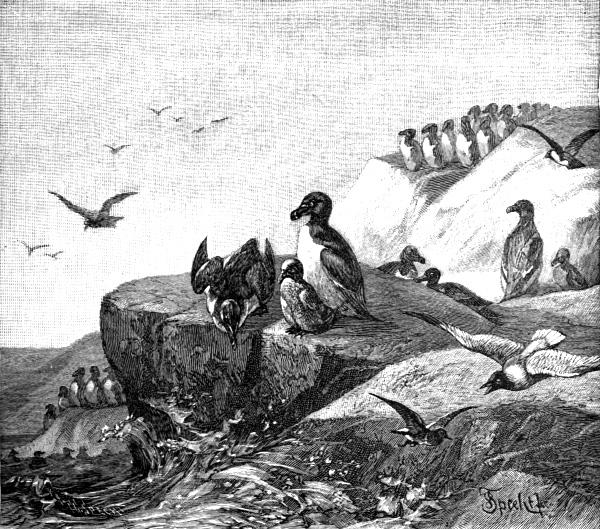
Fig. 4. Razor-bills.
Our boat, as it grated on the rocky shore, startled a number of the gulls, and I saw a picture such as I had seen on many eider-holms and gull-islands. A shot from my friend’s gun thundered against the precipice. As a raging winter storm rushes through the air and breaks up the snow-laden clouds till they fall in flakes, so now it snowed living birds. One saw neither hill nor sky, nothing but an indescribable confusion. A thick cloud darkened the whole horizon, justifying the description “they hide the sun when they fly”. The north wind blew violently and the icy sea surged wildly against the foot of the cliffs, but more loudly still resounded the shrill cries of the birds, so that the truth of the last part also of Faber’s description was fully proved, “they drown the thunder of the surf when they cry”. At length
the cloud sank down upon the sea, the hitherto dim outlines of Swärtholm became distinct again, and a new spectacle enchained our gaze. On the precipices there seemed to sit quite as many birds as before, and thousands were still flying up and down. A second shot scared new flocks, a second time it snowed birds down upon the sea, and still the hillsides were covered with hundreds of thousands. But on the sea, as far as the eye could reach, lay gulls like light foam-balls rocking up and down with the waves. How shall I describe the magnificent spectacle? Shall I say that the sea had woven millions and millions of bright pearls into her dark wave-robe? Or shall I compare the gulls to stars; and the ocean to the dome of heaven? I know not; but I know that I have seen nothing more gorgeous even on the sea. And as if the charm were not already great enough, the midnight sun, erewhile clouded over, suddenly shed its rosy light over promontory and sea and birds, lighting up every wave-crest as if a golden, wide-meshed net had been thrown over the water, and making the rose-tinted dazzling gulls appear more brilliant than before. We stood speechless at the sight! And we, with all our company, even the sailors of our boat, remained motionless for a long, long time, deeply moved by the wonderful picture before us, till at last one of us broke the silence, and, rather to recover himself through the sound of his own voice than to express his inner feeling, softly uttered the poet’s words:
Over the bergs the sun blood-red Shone through the night; Nor day nor dark was over head, But weird twilight



